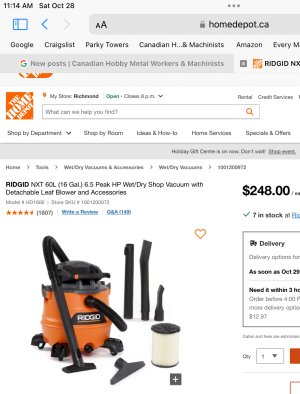Has electricity & physics changed since I went to school those many years ago?
I’m thinking of upgrading the spindle in my CNC engraver, but the one I like is way too much power ( or so I thought). The larger spindles are all advertised as 2.2kw. No way I can run 2.2kw from my single 15A circuit in my garage. But look! The actual nameplate rating is 8.4A @ 110 VAC, or in reality maybe 1kw. This I can do.
And my new shop vac is rated at 6.5 HP, not sure how it can develop 6.5 HP from 12A @ 110 VAC.
Why are advertisers allowed to rewrite physics?

I’m thinking of upgrading the spindle in my CNC engraver, but the one I like is way too much power ( or so I thought). The larger spindles are all advertised as 2.2kw. No way I can run 2.2kw from my single 15A circuit in my garage. But look! The actual nameplate rating is 8.4A @ 110 VAC, or in reality maybe 1kw. This I can do.
And my new shop vac is rated at 6.5 HP, not sure how it can develop 6.5 HP from 12A @ 110 VAC.
Why are advertisers allowed to rewrite physics?



